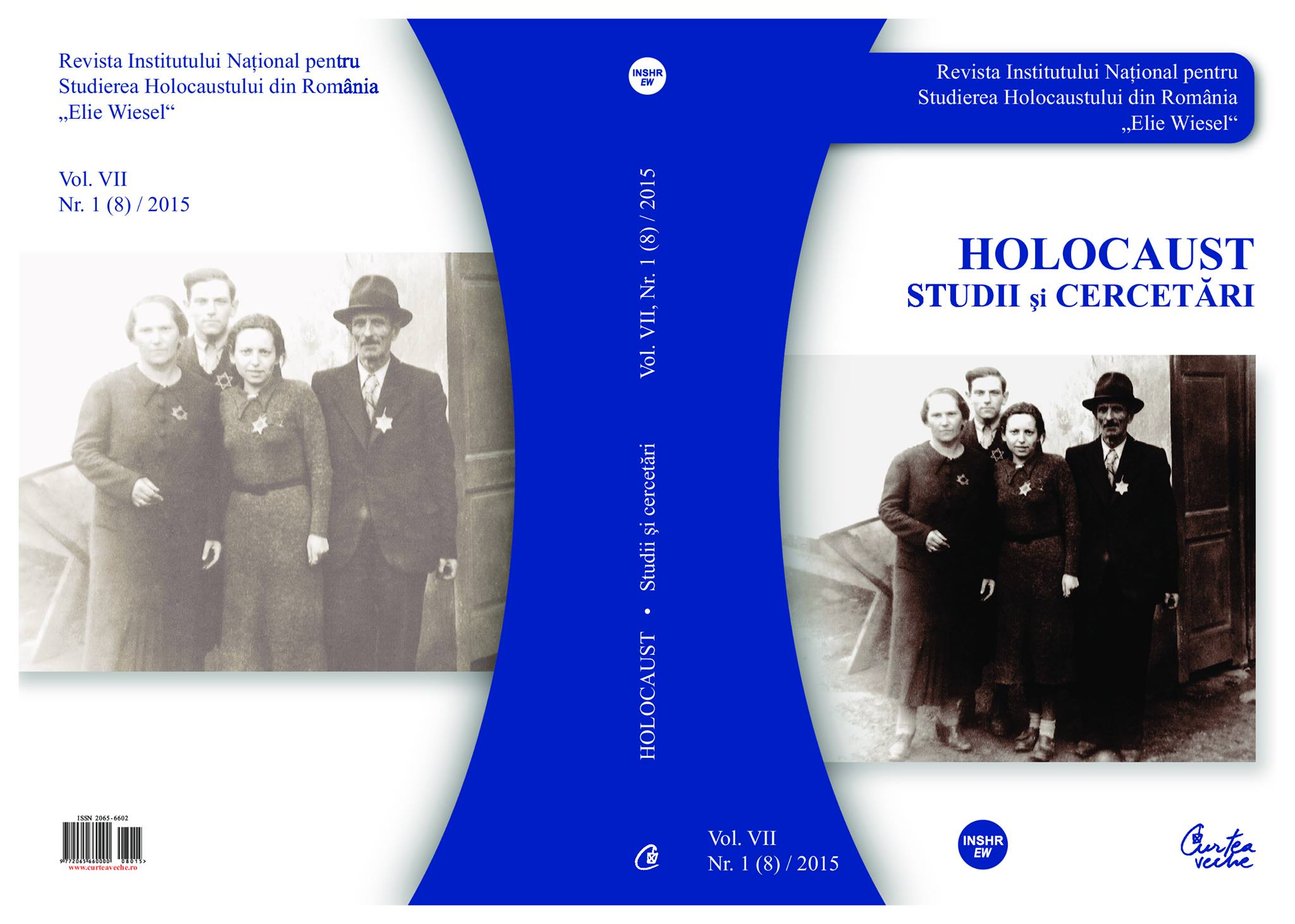The Assault on the Bucharest Jewish Community During the Legionary Rebellion, as Seen by the Press
The Assault on the Bucharest Jewish Community During the Legionary Rebellion, as Seen by the Press
Author(s): Carmen ŢâgşoreanSubject(s): History
Published by: Institutul National pentru Studierea Holocaustului din Romania ELIE WIESEL
Keywords: Pogrom; newspapers; Bucharest; memoirs; WWII
Summary/Abstract: During World War II, Romania underwent one of its history’s most troubling times, leading to a significant decrease in numbers of a minority which had played an important role in the modernization of the country prior to these events. Specifically, I refer to the Jewish com munity and the Holocaust. It is our duty of honor to preserve the memory of those tragic moments: from 1941 to 1944, some of the Jewish community’s most prominent members were killed in pogroms in Bucharest, Bessarabia and Bukovina, Iaşi, or in concentration camps in Transnistria. In Moldova’s counties, the number of those killed or deported repre sents a large percentage of the population (in places, the entire Jewish population was wiped out), while in Bucharest reprisals were particularly emotional, political, or economic. Here, the authorities’ official attitude on the issue triggered a series of atrocities committed against the Jews between 21 and 23 January 1941. Given the involvement of the civilian population in the looting, robberies, and acts of violence against the Jewish population, we can say without hesitation that the manipulation and propaganda conducted by the Romanian authorities and by the most influential intellectuals served their purpose really well. Infor- mation about the events in Bucharest was recorded in official documents, in the Jewish writers’ volumes, in the eyewitnesses’ testimonies, their memoirs, and press articles. The articles, from which a strong antisemitism transpires, should be treated with caution. It is also necessary to take into account the censorship imposed by the authorities, characteristic of periods of military conflict, but also of totalitarian regimes. Regarding the memories, information should be evaluated carefully, because of the emotional involvement of their authors who tend to exaggerate. This study aims at presenting the pogrom in Bucharest and analyzing how it was presented in official documents, in the volumes of the Holocaust historians, in memories and in the central press.
Journal: Holocaust. Studii şi cercetări
- Issue Year: VII/2015
- Issue No: 08
- Page Range: 43-56
- Page Count: 14
- Language: English
- Content File-PDF

